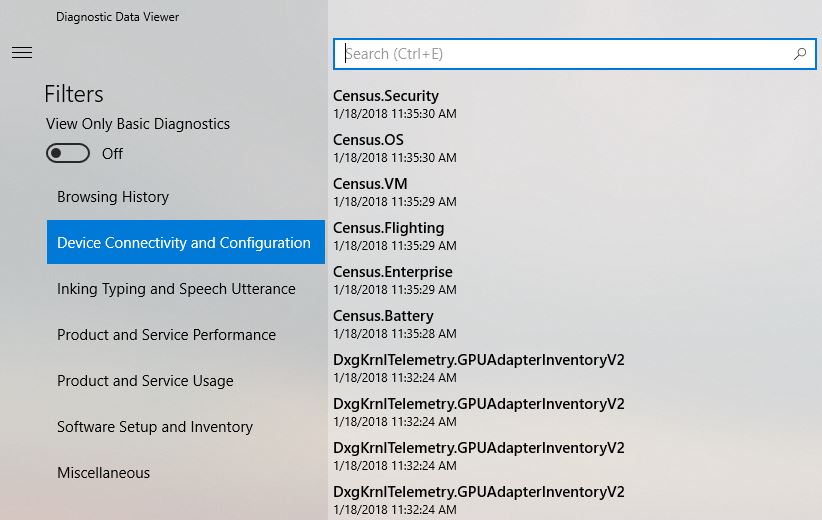Microsoft has today made its new Windows 10 privacy tools official. The company announced the new tools ahead of Data Privacy Day, which gets underway on Jan. 28, 2018. Windows Diagnostic Data Viewer and Privacy Dashboard are two services now entering preview on the Inside.
In a blog announcement, Microsoft says its commitment to privacy is steadfast as technology advances through AI and smart devices. Of course, some would argue Windows 10 is itself not very good at maintaining privacy. The platform has been criticized for the level of user data it takes, something Microsoft has tried to address.
Either way, the company has new privacy tools for Windows 10, available no to Windows Insiders. First is the Windows Diagnostic Data Viewer. Microsoft says this will launch with the next version of the platform (Redstone 4).
“Our commitment is to be fully transparent on the diagnostic data collected from your Windows devices, how it is used, and to provide you with increased control over that data. This is all part of our commitment to increase your trust and confidence in our products and services.”

The Windows Diagnostic Data Viewer delivers enhanced transperancy to diagnostic data received from a Windows device. It will be available as a separate tool from the Microsoft Store. The solutions allows users to search diagnostic data, view it, and take action on the results.
The diagnostic data presented includes:
- Common Data, like the Operating System's name, the Version, Device ID, Device Class, Diagnostic level selection and so on.
- Device Connectivity and Configuration such as device properties and capabilities, preferences and settings, peripherals, and device network information.
- Product and Service Performance data that show device health, performance and reliability data, movie consumption functionality on the device and device file queries. It's important to note that this functionality is not intended to capture user viewing or, listening habits.
- Product and Service Usage data includes details about the usage of the device, operating system, applications, and services.
- Software Setup and Inventory such as installed applications and install history, device update information.
Privacy Dashboard
Also announced today was an improved Microsoft Privacy Dashboard. This will now allow users to manage more data from their Microsoft account. For example, there is now a new Activity History page which presents saved data from an account in an easy to manage way. Users can also adjust the privacy settings on a device or browser from the dashboard.
Changes to the Microsoft Privacy Dashboard will be rolling out over the coming months. Some are available from today.






